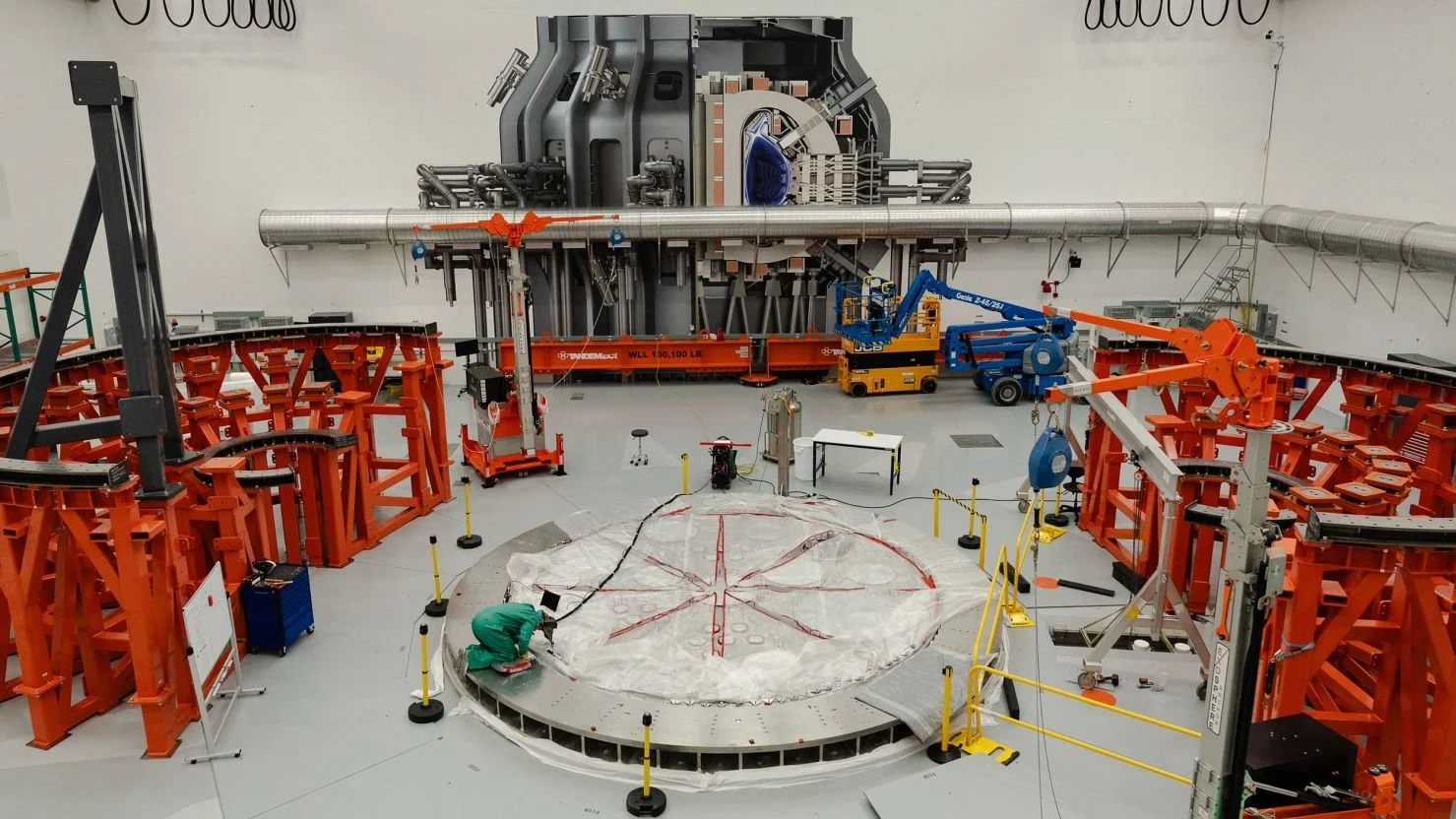Fusion Energy’s Tipping Point: From Breakthroughs to Business
Fusion energy, the process that powers the sun, has long promised limitless, clean electricity. In 2025, that promise feels closer than ever. Record-setting plasma experiments, multi-billion-dollar investments, and bold pilot plant announcements are shifting fusion from a distant dream to a near-future possibility.
Cryostat base of the fusion reactor inside the tokamak hall at Commonwealth Fusion Systems in Devens, Massachusetts. Image of the tokamak is superimposed onto the wall.
Record-Breaking Progress
Earlier this year, China’s EAST Tokamak sustained high-confinement plasma for 1,066 seconds, a global record followed weeks later by France’s WEST reactor, which extended it to 1,337 seconds. These breakthroughs demonstrate growing control over plasma stability, a critical step toward commercial fusion. Meanwhile, Proxima Fusion, a German startup spun out of the Max Planck Institute for Plasma Physics in Munich, published an open-source stellarator-based design for a commercial fusion plant named Stellaris. Its focus on stability and continuous operation paired with public research access marks a notable shift in how the industry is evolving.
Public Investment, Private Acceleration
In January 2025, the UK government made a bold move by investing £410 million in its fusion sector, aiming to repurpose a former coal-fired plant in Nottinghamshire into a national fusion hub. These developments reflect both the global momentum behind fusion energy and the increasing alignment of public policy with private sector innovation.
As of early 2025, private investment in fusion exceeded $7 billion, led by energy giants like Chevron, Shell, and Eni. Market analysts forecast that if current progress continues, the fusion industry could be worth up to $80 billion by 2035 and more than $350 billion by 2050. Beyond grid electricity, fusion could also power hydrogen production, high-temperature industrial processes, and even desalination—expanding its potential impact across sectors.
The Commercialization Timeline
The race to commercialization is heating up—and so are the stakes. Here's what some of the leading players are targeting, and what that could mean:
Commonwealth Fusion Systems plans to achieve net energy from its SPARC project by 2027, with a goal of delivering 400 MW of commercial power via the ARC plant by the early 2030s.
Helion Energy is aiming to produce electricity from fusion by 2028, one of the most aggressive timelines in the sector.
Tokamak Energy is working toward generating 800 MW of fusion power and delivering 85 MW of net electricity by the mid-2030s.
Proxima Fusion, with its open-source stellarator-based design, targets a net energy demonstration by 2031.
General Fusion is pursuing commercial viability in the 2030s, focusing on compact advanced tokamak technology.
UKAEA’s STEP prototype plans to deliver net electric power output by 2040, representing a major public-sector push.
ITER, the world’s largest international fusion project, is aiming for plasma operations by 2035, though not for grid-connected power.
With projected values of up to $80 billion by 2035 and $350 billion by 2050, these timelines aren't just technical goals—they're the foundation of a potentially game-changing energy market.
Challenges on the Horizon
But challenges remain. Tritium fuel remains rare, and fusion reactors must withstand extreme heat and radiation, demanding breakthroughs in advanced materials. Supply chains for components like superconducting magnets are still immature, and regulatory frameworks—though evolving—lack international alignment. Public perception is another hurdle, as fusion often inherits the stigma of nuclear fission despite being fundamentally safer.
A Turning Point
Still, 2025 marks a clear turning point. Fusion pilot plants are no longer hypothetical—they’re funded, under construction, and backed by both policy and capital. With global coordination, sustained innovation, and realistic expectations, fusion energy could become a cornerstone of tomorrow’s clean energy mix.
It’s no longer just a scientific milestone; it’s a business opportunity in the making.


